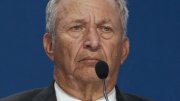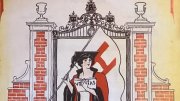Ardent flight instructor, aerobatics competitor, and self-proclaimed space junkie James E. Smolen ’71, Ph.D. ’76, has a distinctive way of escaping conventional life. Flying, he says, “is one of those hobbies that guarantees that your worldly worries remain on the ground.”
Smolen has been air-bound since age three, skimming the skies with his pilot father in the back of a “high-wing taildragger.” His fondest memories include clutching the reinforcement bars and bouncing around on his seat as the plane taxied in. Inevitably, he found his way to the cockpit, receiving his glider and airplane private pilot licenses from the U.S. Air Force Auxiliary Civil Air Patrol in 1967 just before entering Harvard, where he concentrated in biochemistry.
 |
| James Smolen at the controls of the Gromit Comet |
| Courtesy of James Smolen |
After earning a doctorate in the same field, Smolen pursued his postdoctorate research at New York University School of Medicine, but had neither the time nor resources to fly. He made his frequent-flying comeback during the mid eighties, ending his 14-year hiatus from the skies while he was a junior faculty member at University of Michigan School of Medicine. This time around, he took to the skies as a flight instructor with an appetite for aerobatics.
“In another world,” Smolen muses, “I would’ve tried to become an astronaut.” An appointment in 1996 as associate professor at Baylor College of Medicine serendipitously brought him within miles of NASA’s Johnson Space Station. He seized the opportunity to apply for research grants from NASA, which he used to study immunodeficiency in space. But in 2002, tired of the grant-seeking rat race, he left the research field and became an administrator for the department of biochemistry and cell biology at Rice University.
With his weekends devoted to flying, Smolen competes in intermediate aerobatic contests with his stubby, red Pitts S1S, aptly nicknamed the Gromit Comet. In September, he directed his second annual Gulf Coast Regional aerobatics contest, and he continues shaping up for a return to national competition next year.
“It’s a real challenge,” he says. “You are making important decisions all the time and that to me is tremendously exciting.” Before launching into each maneuver (all executed within a one-cubic kilometer “aerobatic box”), he assesses everything from airspeed to altitude and modifies each turn to suit impending conditions.
Although most people brand aerobatic pilots brazen daredevils, Smolen acknowledges that the apprehension about flying never dissipates entirely and shouldn’t. “You should always be a tiny, tiny bit scared, knowing that what you’re doing carries risk and that you must be vigilant.”
~Ying Wang




